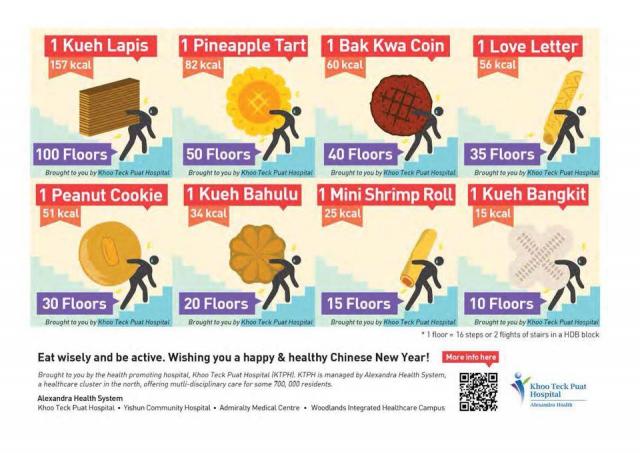Search the Community
Showing results for tags 'Calories'.
-
Fast food meals have fewer calories than restaurant dishes, BMJ finds Fast food meals are less calorific than many restaurant dishes, research published in the BMJ has found. The study found that meals served by popular high street eateries - including Harvester and Hungry Horse - contain more than twice the amount of recommended calories. Health officials say that a main meal should contain no more than 600 calories. But the study found that the average dish served in a chain restaurant contains 1033 calories. The figure far exceeds the average 751 calorie countent found in meals served by fast-food joints including MacDonalds, Wimpy and Burger King. The biggest offenders were the Hungry Horse and Stone House restaurant chains, which which clocked up 1,358 and 1,275calories in an average main meal respectively. Other well-known restaurant chains with high calorie content included Harvester, at 1,166 calories, JD Wetherspoon, with 1119 calories, and Nandos, on 1,019 calories. Advice issued by Public Health England in March said people should be aiming to consume 600 calories for lunch and dinner. Author Dr Eric Robinson, a behavioural psychologist at Liverpool University, said the findings were "shocking". But he warned that they under-estimate the true picture, since drinks, starters, desserts and side orders were excluded from the study. He said: "Only one-in-ten of the meals we surveyed could be considered a healthy number of calories. "Although some of the results are shocking our findings probably underestimate the number of calories consumed in restaurants because our analysis did not include drinks, starters, desserts or side orders." He said: "It's really clear what the food industry need to do - they need to act more responsibly and reduce the number of calories that they're serving." Britain’s restaurant habits are fuelling its obesity crisis he said, with four in ten adults eat out at least once a week. Dr Robinson said the poor nutritional content of 'fast food' is well known but full service restaurants where dining tables are provided have received less attention. The study analysed the calories in 13,500 main meals from 21 full-service and six fast-food chains. Among fast food chains, meals at Burger King had an average of 711 calories, followed by Wimpy, at 721 calories, and McDonald’s at 726 calories. The highest meal in a restaurant classed as “fast-food” was at KFC, with an average of 987 calories. Dr Robinson said: "On average, the energy content of main meals served by full service restaurants was 268 calories higher than that of main meals served by fast food restaurants.” Researchers said many public health experts had focussed concern on fast foods, but not paid enough attention to the stodgy and fatty fare sold in high street restaurants. The UK is the most overweight nation in Western Europe - with levels of obesity growing faster than in the US. Last year a study by the Organisation for Economic Cooperation and Development (OECD) said Britain was the sixth-worst country in its 35 member states - coming behind Mexico, the USA, New Zealand, Finland and Australia. Two in three adults are overweight or obese. The Government is consulting on introducing mandatory calorie labels on restaurant menus, while health officials are working on plans to cut the calorie content of meals. https://www.msn.com/en-sg/health/fitness/fast-food-meals-have-fewer-calories-than-restaurant-dishes-bmj-finds/ar-BBQYCUr?ocid=spartanntp
-
Scientists have discovered a simple way to cook rice that dramatically cuts the calories Rice, the lifeblood of so many nations' cuisines, is perhaps the most ubiquitous food in the world. In Asia, where an estimated 90 percent of all rice is consumed, the pillowy grains are part of almost every meal. In the Caribbean, where the starch is often mixed with beans, it's a staple too. Even here in the United States, where people eat a comparatively modest amount of rice, plenty is still consumed. Rice is popular because it's malleable—it pairs well with a lot of different kinds of food—and it's relatively cheap. But like other starch-heavy foods, it has one central flaw: it isn't that good for you. White rice consumption, in particular, has been linked to a higher risk of diabetes. A cup of the cooked grain carries with it roughly 200 calories, most of which comes in the form of starch, which turns into sugar, and often thereafter body fat. But what if there were a simple way to tweak rice ever so slightly to make it much healthier? An undergraduate student at the College of Chemical Sciences in Sri Lanka and his mentor have been tinkering with a new way to cook rice that can reduce its calories by as much as 50 percent and even offer a few other added health benefits. The ingenious method, which at its core is just a simple manipulation of chemistry, involves only a couple easy steps in practice. "What we did is cook the rice as you normally do, but when the water is boiling, before adding the raw rice, we added coconut oil—about 3 percent of the weight of the rice you're going to cook," said Sudhair James, who presented his preliminary research at National Meeting & Exposition of the American Chemical Society (ACS) on Monday. "After it was ready, we let it cool in the refrigerator for about 12 hours. That's it." How does it work? To understand what's going on, you need to understand a bit of food chemistry. Not all starches, as it happens, are created equal. Some, known as digestible starches, take only a little time to digest, are quickly turned into glucose, and then later glycogen. Excess glycogen ends up adding to the size of our guts if we don't expend enough energy to burn it off. Other starches, meanwhile, called resistant starches, take a long time for the body to process, aren't converted into glucose or glycogen because we lack the ability to digest them, and add up to less calories. A growing body of research, however, has shown that it might be possible to change the types of starches found in foods by modifying how they are prepared. At the very least, we know that there are observable changes when certain foods are cooked different ways. Potatoes, for instance, go from having the right kind of starch to the less healthful kind when they are cooked or mashed (sigh, I know). The process of heating and cooling certain vegetables, like peas and sweet potatoes, can also alter the amount of resistant (see: good) starches, according to a 2009 study. And rice, depending on the method of preparation, undergoes observable chemical changes. Most notably, fried rice and pilaf style rice have a greater proportion of resistant starch than the most commonly eaten type, steamed rice, as strange as that might seem. "If you can reduce the digestible starch in something like steamed rice, you can reduce the calories," said Dr. Pushparajah Thavarajah, a professor who is supervising the research. "The impact could be huge." Understanding this, James and Thavarajva tested eight different recipes on 38 different kinds of rice found in Sri Lanka. What they found is that by adding a lipid (coconut oil in this case, because it's widely used in Sri Lanka) ahead of cooking the rice, and then cooling the rice immediately after it was done, they were able to drastically change its composition—and for the better. "The oil interacts with the starch in rice and changes its architecture," said James. "Chilling the rice then helps foster the conversion of starches. The result is a healthier serving, even when you heat it back up." So far they have only measured the chemical outcome of the most effective cooking method for the least healthful of the 38 varieties. But that variety still produced a 10 to 12 percent reduction in calories. "With the better kind, we expect to reduce the calories by as much as 50 to 60 percent," said James.
-
One Kueh Lapis has a whopping 157 calories! This equates to climbing 100 floors. Oh wow. Anyway, this infographic produced by Khoo Teck Puat hospital is for sharing. Wishing everybody a happy and healthy Chinese New Year!
- 47 replies
-
- 7
-

-
- calories
- chinese new year
- (and 5 more)
-
Taken from this website http://gizmodo.com/5901052/how-many-calori...ing-a-cigarette How Many Calories You Burn Having Sex, Eating Pizza and Smoking a Cigarette The best thing about the Nike Fuelband is that it can keep track of any activity you do. Yes, any. You know what that means, right? Let's find out how many calories we burn and how much Nikefuel we earn doing totally normal everyday things. For reference, Nike considers a 3000 Nikefuel day to be an 'active' day with a 2000 Nikefuel day being a 'normal' day. On to the numbers! Brushing Your Teeth:: 17 Calories, 47 Nikefuel Eating Pizza: 8 Calories, 23 Nikefuel Washing Dishes: 30 Calories, 86 Nikefuel Sending a Text: 0 Calories, 1 Nikefuel Shaking My Arm Up and Down for 30 Seconds: 9 calories, 26 Nikefuel Smoking a Cigarette: 8 Calories, 21 Nikefuel* Walking Up 4 Flights of Stairs: 7 calories, 19 Nikefuel Taking a Shower: 60 Calories, 169 Nikefuel Using the Restroom (#1): 2 Calories, 6 Nikefuel Using the Restroom (#2): 10 Calories, 31 Nikefuel Sleeping: 25 Calories, 79 Nikefuel Masturbating: 82 Calories, 231 Nikefuel Having Sex: 179 Calories, 514 Nikefuel A Night Out Drinking: 463 Calories, 1303 Nikefuel A Night Out I Don't Remember: 1129 Calories, 3320 Nikefuel Being Hungover: 102 Calories, 292 Nikefuel So of all the activities, walking up four flights of stairs is easily the worst deal you can get wearing a Nike Fuelband while going out and partying seems to score you the most bang for your buck. * I know, right? But we checked this multiple times. Curious about any other activity? Let me know and I'll try and test it out.




